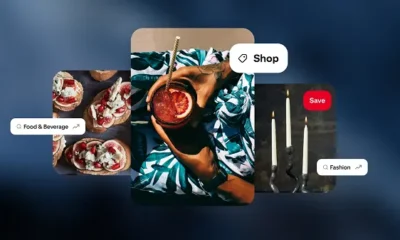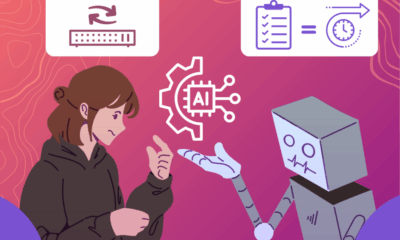“Lots of marketers have adopted agile practices and tried to transform how they go to market in terms of customer journeys,” said Tom Hannigan, Global Practice Lead for precision marketing platform HCL Unica, at our MarTech conference. “Their biggest challenge is not necessarily envisioning what they want that journey to look like or what they want that customer experience to be, but more about translating what’s on the whiteboard into the market.”
Most marketers are looking for practical ways to improve their customer journeys, but this can be more easily said than done. Marketing departments often have to adjust outdated technology systems to meet customer needs along their buying journeys while improving processes on the fly.
“Everybody has one of these customer journey maps,” Hannigan said. “The real trick is not in envisioning all the things you could do, but figuring out how to get practical.” He discussed strategy in the context of the travel and hospitality industry.

Here are three practical strategies to help marketers craft more impactful customer journeys across all channels.
Generate milestones for your customer journey
Hannigan recommends marketers put together what he calls “golden milestones,” which are events that “must happen for your customer to get value from your offering.” These can help marketers map out their goals while filling in the practical steps required to meet them.
“You have all these different possible touchpoints, personalization points and moments of inspiration,” he said. “But before that, go for the golden milestones.”

Translating these milestones into practical steps can be a complex process. That’s why marketers need to communicate the value of these goals to their technology departments, which are vital for tracking campaign events.
“Another critical gap when it comes to deploying journeys in the market is preparing yourself to have a conversation with IT about what some of the sources of those events are,” said Hannigan.
He added, “It isn’t just one source; it may be a booking or reservation API or some other data source that’s occurring in real-time that you’re going to need to tap into to bring those events in.”

Explore capabilities from vendors like Adobe, Pointillist, SharpSpring, Salesforce and more in the full MarTech Intelligence Report on customer journey analytics platforms.
Automate personalization rules for the journey
Personalization strategies — whether in the form of curated messages or specific offers — are great ways to keep customers engaged along their journeys. Many brands have come up with a variety of creative tactics to meet consumers where they are. However, it can be easy to neglect the customer’s perspective in these strategies’ practical application.
“A lot of folks like to concentrate on the creative aspects of personalization, which is critical,” Hannigan said. “But there’s something much more practical that we like to chat with our clients about, which is how to make the customer journey make sense to the customer.”
He added, “We want to reduce the likelihood that you’re going to have awkward offsets being delivered, so we recommend using a rules engine to set parameters and automate it.”

Hannigan gave an example of a hotel client his team worked with that sought to provide better client experiences throughout their booking processes. His marketing team worked with their IT department to set automation rules for personalization — keeping the aspects that worked and removing the personalized prompts that didn’t fit within the customer’s context.
“If we have 500 offers that are available at any given time, let’s limit that to some level that’s consumable by the customer in the channel that they are consuming it in,” he said. “In the case of this customer we thought it [the channel] might potentially be a mobile app, so we wanted to limit that to two offers per member, and these were delivered while they were on site.”
He also recommended creating automated rulesets to ensure there were no duplicates, as well as doing your best not to look “awkward”: “If you know — via somebody’s customer profile — that they have already reserved a rental car through you, you probably wouldn’t want to serve up an offer for a rideshare and vice versa. If somebody is already booked rideshare, why serve up an offer for a rental car?”

Identify underperforming assets and adjust in real-time
Continuing with the hotel client example, Hannigan reviewed the methods his team used to monitor campaign performance. By breaking up the customer journey into sections and ensuring milestone event tracking was in place, they were able to identify areas failing to meet goals.

After identifying these underperforming assets, marketers need to work with other relevant departments to develop solutions. But whatever new tactic is introduced, it should all be in the service of customers’ expectations.
“Is it a speed and convenience problem or is it just a habits problem that needs some kind of incentive?” Hannigan asked. “These are all things that you can identify at each stage in the journey and then create tests for along the way to understand the best way to optimize your journey on the fly.”
He added, “If you have a customer profile, use it. Customers expect you to know these things about them . . . Use things like a milestone report to identify your underperforming treatments and assets.”
Customer journey analytics: A snapshot
What it is. Customer journey analytics software lets marketers connect real-time data points from across channels, touchpoints and systems, allowing users to gain insights into the customer journey over time. This allows marketers to explore the customer journey using data.
Why it’s hot today. Businesses know they need to be customer-focused in each aspect of their marketing operations. As a first step, brands need to understand how consumers are finding them. Whether it be via search, advertisement, or word of mouth, the medium used will set the trajectory for the rest of their journey.
Meanwhile, the average person uses many devices to access the internet, and Cisco forecasts that the number of devices connected to IP networks will increase to more than three times the global population by 2023. With so many devices, people shift back and forth depending on the task at hand and their current environment. Consumers and business buyers turn to an average of nine channels to browse product inventory, look for advice, and make purchases.
Capturing their interactions post-discovery, such as communication with a call center or visit to a retail outlet, helps brands see which of their assets are helping them along their path. What’s more, brands need to know what those who convert do post-purchase–this information helps companies win repeat business and encourage customer advocacy. Customer journey analytics tools do just that.
What the tools do. The majority of vendors offer one or more of the following capabilities to give marketers an understanding of the customer journey: data gathering from a wide variety of channels and touchpoints; analysis using artificial intelligence and machine learning, and customer journey visualization.
Many vendors also offer customer journey orchestration (CJO) capabilities, which allow users to act upon the insights and actually deliver the next step in the customer journey in real-time.
Why we care. Customers expect to have consistent experiences at each of these touchpoints. They want personalization, a trend that continues to grow. Tools like customer journey analytics software give brands the ability to gain insights from their audience and act on them.
Read Next: What is customer journey analytics and how are these tools helping marketers?















![How to Create A Website to Sell Products In 8 Steps [+6 Expert Tips] How to Create A Website to Sell Products In 8 Steps [+6 Expert Tips]](https://articles.entireweb.com/wp-content/uploads/2024/10/1727868370_How-to-Create-A-Website-to-Sell-Products-In-8.webp-400x240.webp)
![How to Create A Website to Sell Products In 8 Steps [+6 Expert Tips] How to Create A Website to Sell Products In 8 Steps [+6 Expert Tips]](https://articles.entireweb.com/wp-content/uploads/2024/10/1727868370_How-to-Create-A-Website-to-Sell-Products-In-8.webp-80x80.webp)


![Holistic Marketing Strategies That Drive Revenue [SaaS Case Study] Holistic Marketing Strategies That Drive Revenue [SaaS Case Study]](https://articles.entireweb.com/wp-content/uploads/2024/09/Holistic-Marketing-Strategies-That-Drive-Revenue-SaaS-Case-Study-400x240.png)
![Holistic Marketing Strategies That Drive Revenue [SaaS Case Study] Holistic Marketing Strategies That Drive Revenue [SaaS Case Study]](https://articles.entireweb.com/wp-content/uploads/2024/09/Holistic-Marketing-Strategies-That-Drive-Revenue-SaaS-Case-Study-80x80.png)
You must be logged in to post a comment Login